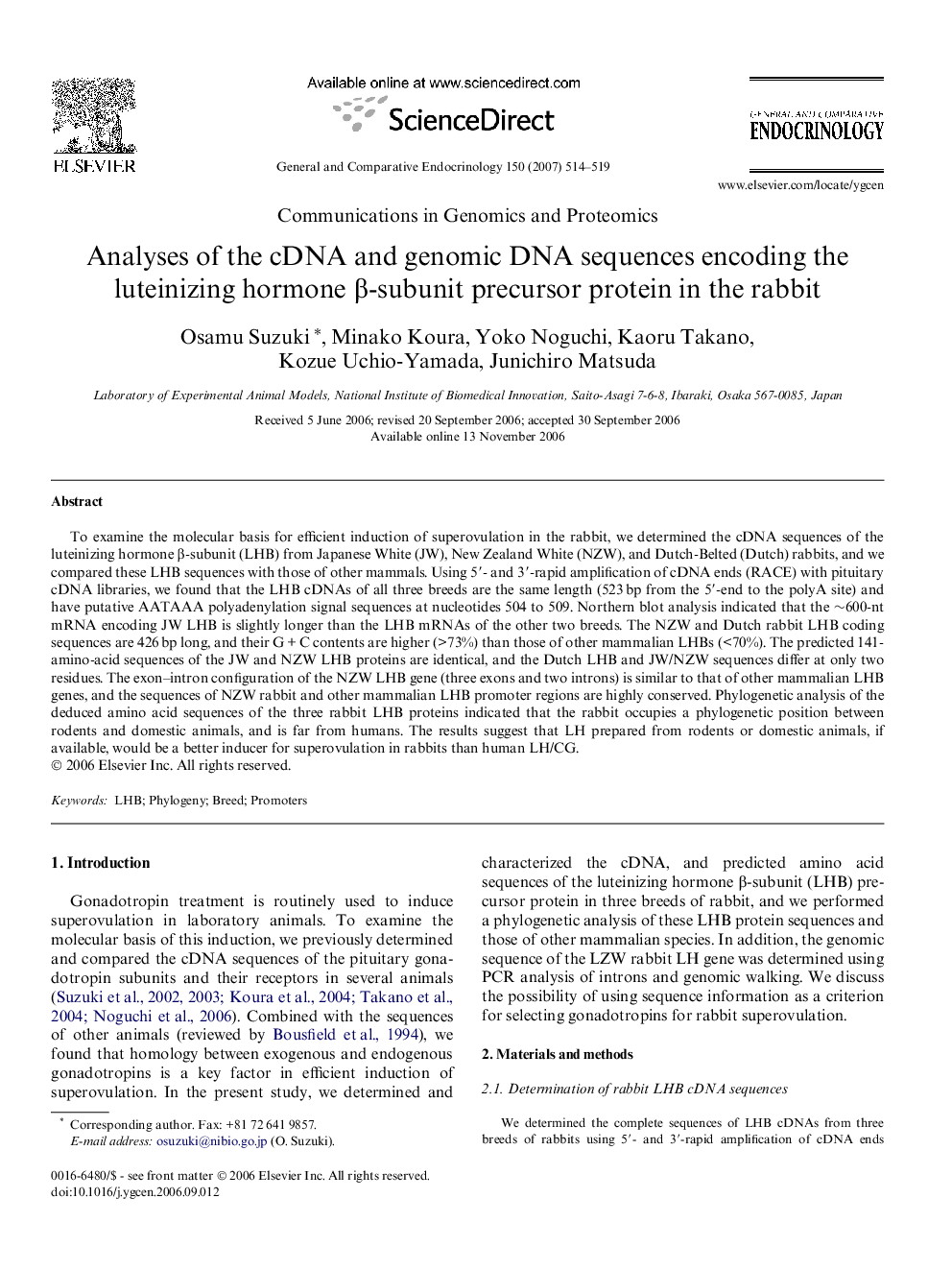| Article ID | Journal | Published Year | Pages | File Type |
|---|---|---|---|---|
| 2802094 | General and Comparative Endocrinology | 2007 | 6 Pages |
To examine the molecular basis for efficient induction of superovulation in the rabbit, we determined the cDNA sequences of the luteinizing hormone β-subunit (LHB) from Japanese White (JW), New Zealand White (NZW), and Dutch-Belted (Dutch) rabbits, and we compared these LHB sequences with those of other mammals. Using 5′- and 3′-rapid amplification of cDNA ends (RACE) with pituitary cDNA libraries, we found that the LHB cDNAs of all three breeds are the same length (523 bp from the 5′-end to the polyA site) and have putative AATAAA polyadenylation signal sequences at nucleotides 504 to 509. Northern blot analysis indicated that the ∼600-nt mRNA encoding JW LHB is slightly longer than the LHB mRNAs of the other two breeds. The NZW and Dutch rabbit LHB coding sequences are 426 bp long, and their G + C contents are higher (>73%) than those of other mammalian LHBs (<70%). The predicted 141-amino-acid sequences of the JW and NZW LHB proteins are identical, and the Dutch LHB and JW/NZW sequences differ at only two residues. The exon–intron configuration of the NZW LHB gene (three exons and two introns) is similar to that of other mammalian LHB genes, and the sequences of NZW rabbit and other mammalian LHB promoter regions are highly conserved. Phylogenetic analysis of the deduced amino acid sequences of the three rabbit LHB proteins indicated that the rabbit occupies a phylogenetic position between rodents and domestic animals, and is far from humans. The results suggest that LH prepared from rodents or domestic animals, if available, would be a better inducer for superovulation in rabbits than human LH/CG.
